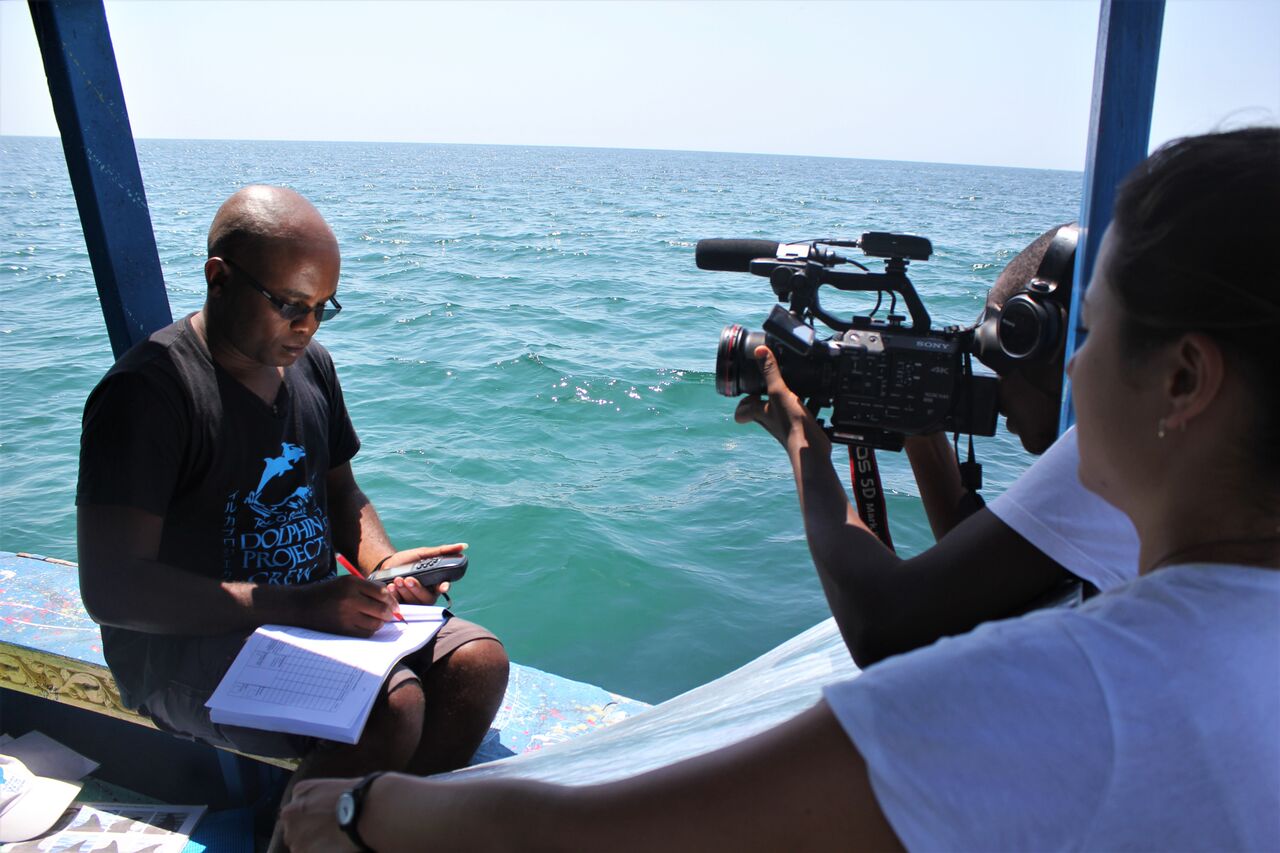Kenya Wildlife Service (KWS) with Watamu Marine Association (WMA) have been studying dolphins and whales since 2010. These are the first consistent studies of marine mammals on the Kenyan coast.
Marine mammals known scientifically as cetaceans are protected by Kenyan law, however they are vulnerable to a number of threats, including plastic pollution, fishing bycatch, oil and gas exploration and unregulated dolphin and whale watching.
The species of inshore dolphins that can be sighted are Indo Pacific bottlenose dolphins (IPBND) and Indian Ocean humpback dolphins (IOHBD). The latter are reducing in numbers due to an increase in human activity coinciding with increased fishing and other human activity, and are susceptible to bycatch in fishing gears.
The Research Team are combination of WMA and KWS. Including Michael Mwang’ombe, Kahindi Charo and Lynne Njeri. Their main tasks are to collect and analyse data from in boat surveys photographing the dolphins and whales to identify them. This is done from their dorsal fins and tail flukes.
The team also run an education program teaching school children, fishermen and visitors to Watamu the importance of protecting these intelligent top predators critical to health the ocean’s eco system.
Kenya Marine Mammal Network (KMMN) is a larger national organisation made up of KWS, WMA, Kenya Marine and Fisheries Research Institute, National Environment Management Authority, WWF Kiunga, Wildlife Conservation Society, and the Kenyan Association of Sea Anglers. As a collective group we aim to identify marine mammal hotspots to increased protection in those areas on the Kenyan coast. The KMMN also works with partners regionally, in Tanzania, Mozambique, Madagascar and Reunion to gather data on marine mammal cross migratory species.
Through the network the KMMN have identified 22 of the 33 marine mammal species found in East Africa, including species such as the False Killer whale, Orca, Blue whale, Brydes whale, Short-finned pilot whale.












